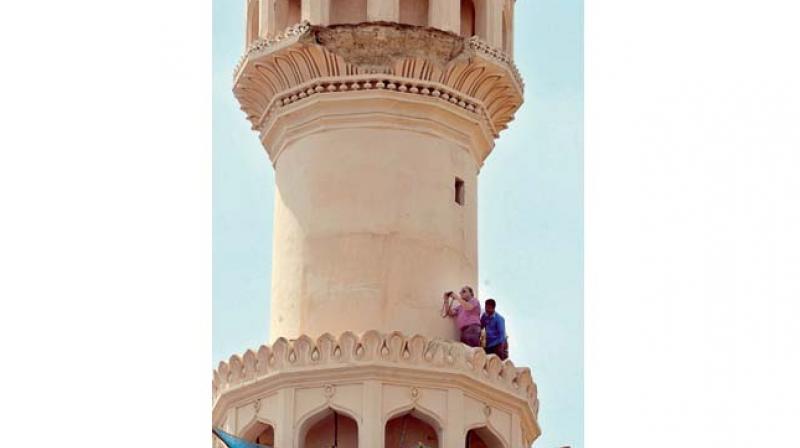Infrared light to study Charminar
ASI wants ban on heavy machinery.

Hyderabad: The Archaeological Survey of India is planning to carry out thermal imaging of Charminar using infrared light to detect degradation pattern and strength of the structure.
Joint director general (conservation, world heritage, NCF) of Archaeological Survey of India Mr Janhwij Sharma arrived here on Friday to gather information on the breastwork that broke off from the southwest minaret of the monument. He inspected not only the affected area but also every niche of the monument.
He discussed with the officials the precautionary measures to be taken to reduce external threats to the monument. They also discussed scanning the monument using infrared thermography to detect defects that are invisible to the unaided eye, inspect damped zones, subsurface cracks and causes of the material weakness.
Mr Sharma asked superintending archaeologist Milind Kumar Chauley to prepare a long-term plan for preserving the monument. Mr Chauley explained that vibrations and pollution were the main causes of decay. Such incidents occur after the rain, he said. The vibrations cause cracks on the monument. When it rains continuously, the lime plaster imbibes the water and bulges. This increases the weight of the plaster by up to 70 per cent and the protrusion part of lime plaster falls down.
He showed the broken piece of lime plaster which had detached and fallen late on Wednesday night. He explained how a thin layer of dust encrusts between the cracks, which not only deepens the crack but also weakens the binding property of the material.
Mr Chauley is planning to write a letter to the state government on precautionary measures to be taken by civic body and other agencies of the state.
He wants a complete ban on the use of heavy machinery, which causes vibrations, in the vicinity of the monument, and extension of the buffer zone.

